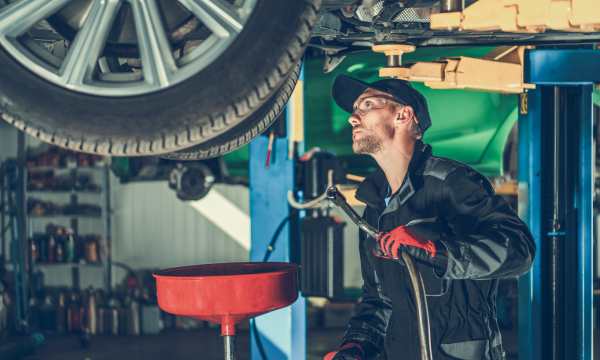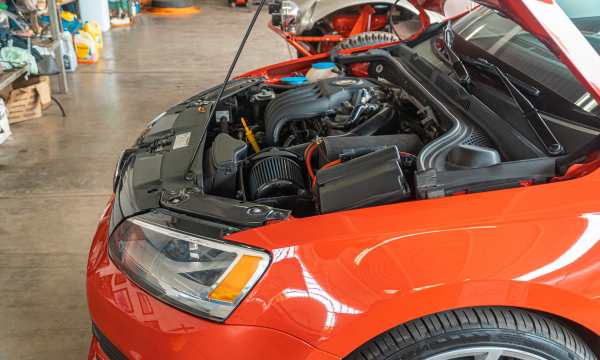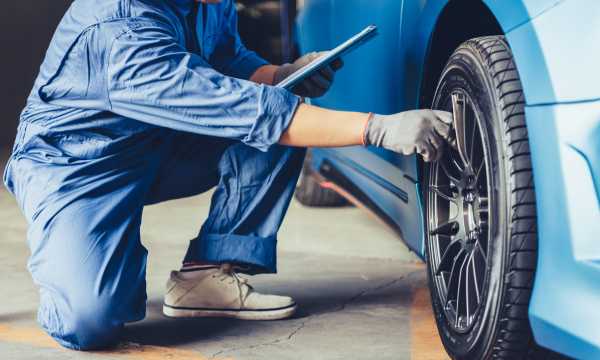6 Steps to Ensure Tire Maintenance and Safety
Maintaining your tyres is important to ensure that your car is safe, drives well and lasts a long time.
Tyres are the only part of your car that touches the road, so their performance and maintenance are important to your driving habits. This complete guide will show you the six important steps you need to take to keep your tyres in good condition and safe on the road.
1. Check the Tyre Pressure Regularly:
Keeping your tyres at the correct pressure is one of the easiest and most important parts of tyre maintenance. Underinflated tyres can cause uneven wear, poor fuel economy and even blowouts. On the other hand, overinflated tyres will make your ride less comfortable and reduce the tire’s contact patch with the road, reducing stability.
A good tyre pressure gauge should be used once a month, as well as during long trips or when moving extra weight. You can usually find your car’s recommended tyre pressure on a sticker inside the driver’s door or in the owner’s manual. For the best readings, check the pressure while the tyres are cold, which means the car has not been driven for at least three hours.
2. Check the Tyres for Damage and Wear:
By regularly inspecting your tyres for signs of damage and wear, you can maintain your safety and extend the life of your tyres. Check for holes, tears, cuts, punctures, bulges and uneven wear patterns. Use the “penny test” to determine how deep the tread is: Place a penny in the tread with Lincoln’s head down. If you can see the top of your Lincoln’s head, it’s time for new tyres.
If the wear is uneven, it may indicate that the wheels are out of alignment or the tyres are out of balance. Addressing these issues immediately can prevent further damage to your tyres and ensure a safe and smooth ride.
3. Replace the Tyres Regularly:
Tyre rotation refers to changing the tyres from one position on the car to another so that the tyres wear evenly. Front and rear tyres wear at different rates. This is especially true for front-wheel-drive cars, which carry more weight and experience more stress when the car turns and stops.
Tyres should be replaced every 5,000 to 8,000 miles, but check your specific car’s owner’s manual for more information. By replacing your tyres regularly, you can extend the life of your tyres, save money on gas and keep your car stable and reliable, especially when parking or turning.
4. Make Sure the Wheels are Properly Aligned:
Wheel alignment refers to adjusting the angle of the wheels according to the manufacturer’s standards and is important to ensure even tyre wear, proper car handling and straight steering. When the wheels are misaligned, the tyres wear quickly and unevenly, making the car difficult to drive and using more gas.
If your car pulls to one side, the steering wheel is off-center when you drive straight, or your tyres are wearing unevenly, you may need to align your wheels. Most experts say you should have your alignment checked every 6,000 miles or every time you replace your tyres.
5. Check and Repair the Wheel Balance:
Balancing the wheels ensures that the wheels and tyres do not rock the car as they turn, which can damage suspension and steering components, wear out the tyres faster and make driving difficult. A wheel can become unbalanced if the tyre wears out or loses the weight that keeps the wheel balanced.
If the steering wheel, seats or floor start to vibrate at certain speeds, this could mean that your wheels are out of balance. To ensure that you drive smoothly and experience even wear on your tyres, have your wheels balanced by a professional. This usually happens while the tyres are being rotated.
6. Buy Good Tyres and Replace Them When They are Worn:
Buying quality tires from a reputable brand can help your car drive better, use less gas and keep you safer. Quality tires may cost more initially, but they are worth it in the long run because they last longer and perform better.
No matter how well you maintain them, your tires will wear out and need to be replaced at some point. In addition to the penny test, you should also look at the age of your tires. Most manufacturers say that tires, regardless of how deep the tread is, should be replaced every six years because the rubber compound breaks down quickly.
Conclusion:
You can keep your car’s tyres in good condition by doing the following six things: Regularly check tyre pressure, inspect tyres for damage and wear, rotate tyres regularly, ensure wheel alignment, check wheel balance and adjust them, and buy good tyres. Cleaning and repairing your tires regularly will not only keep you safer on the road, but also make your car drive better, saving you money and effort in the long run. Remember that your tires are an important part of the safety of you and your guests, so take good care of them.
FAQs:
1. How often should I check my tyre pressure?
Check your tire pressure at least once a month, before a long trip or when carrying extra weight. By checking your tire pressure regularly, you can ensure that your tires are at the correct pressure, which ensures safety, longevity and gas mileage.
2. What does the penny test entail and how is it carried out?
Here’s an easy way to check your tire’s tread depth and see if it needs replacing: the penny test. Place a coin in the groove of the tread with Lincoln’s head facing down. If you can see the top of your Lincoln’s head, you need new tires. The profile height is less than 2/32 inch.
3. Why is it important to change your tires? How often?
Rotating your tires is important to ensure even tire wear. This means your tires will last longer, they will use less petrol and your car’s driving behavior will remain stable. Most manufacturers say you should replace your tires every 5,000 to 8,000 miles, but check your specific car’s owner’s manual for more information.
4. How do I know if my wheels need to be balanced?
If the steering wheel, seats or floor vibrate at certain speeds, you may need to balance the wheels. Wheel balancing keeps the wheels and tires turning without making the ride too rough or wearing out the tires too quickly.
5. How do I know if my tires are old and need to be replaced? What if they still step on it?
Most tire companies and automotive experts say that tires should be replaced every six years, regardless of how deep the tread is, because the rubber compound breaks down over time. Check the DOT (Department of Transportation) code on the tire’s rim to get an idea of the tire’s lifespan. This code indicates the week and year in which the tire was produced. If your tires are more than six years old, you may need new ones to keep your car safe.
 Car Maintenance Tips
Car Maintenance Tips
Discover essential car maintenance tips to keep your vehicle running smoothly and efficiently. 1. Introduction Regular car […]
More Seasonal Car Maintenance Tips for Year-Round Performance
Seasonal Car Maintenance Tips for Year-Round Performance
Maintaining your car is important to ensure that it lasts as long as possible, remains safe and […]
More Top 5 Essential Car Maintenance Tasks Every Beginner Should Know
Top 5 Essential Car Maintenance Tasks Every Beginner Should Know
For beginners, it can be difficult to find your way around the field of car repair. That […]
More